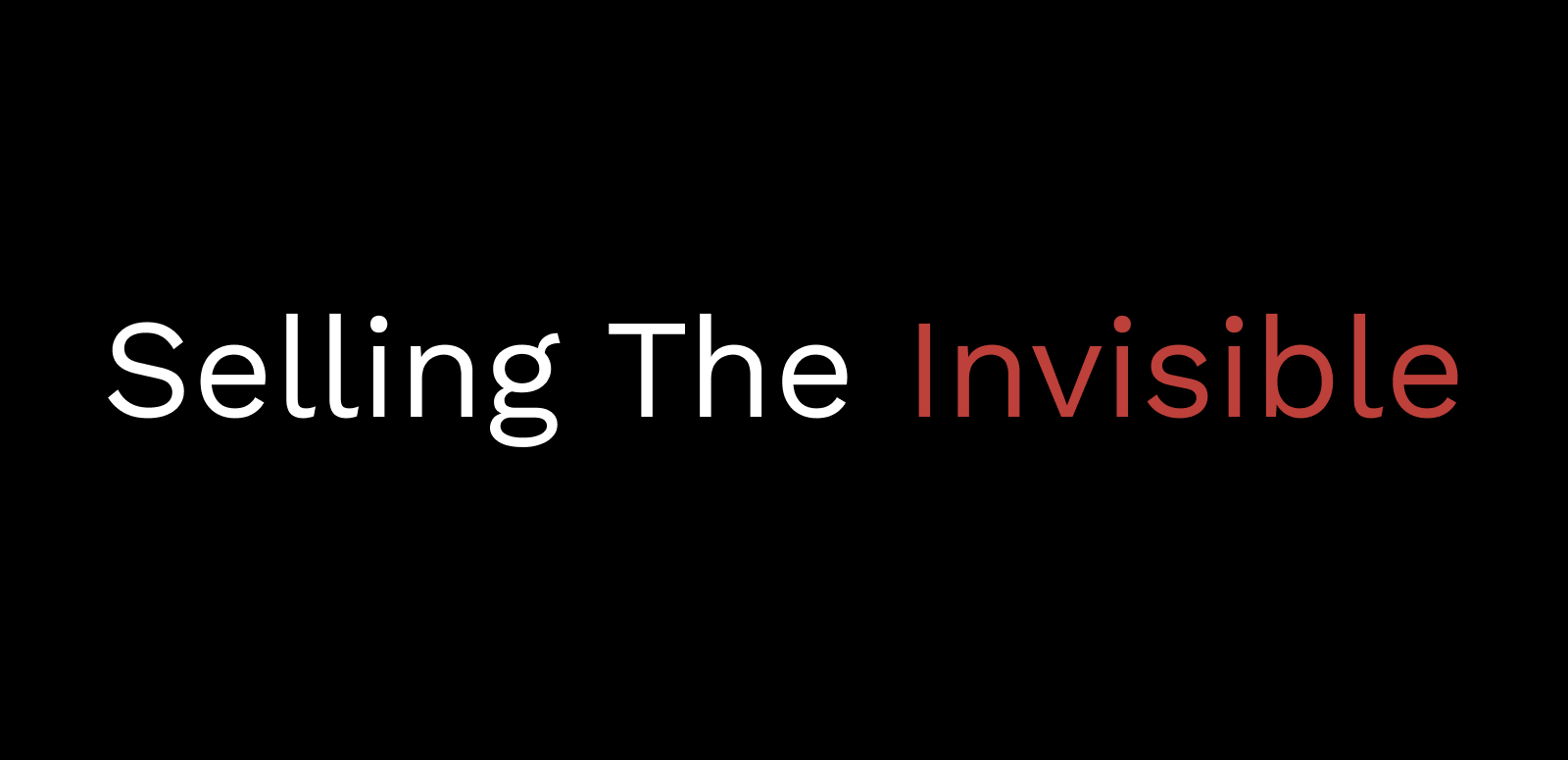I just finished reading the book Selling The Invisible by Harry Beckwith and highly recommend it.
It’s a collection of advice on how to market and sell services of all types – especially when people can’t physically touch or experience the product prior to purchasing.
Following are some of my favorite excerpts from the book…
The first principle of service marketing is Guy Kawasaki’s first principle of computer marketing:
Get better reality.
“Better reality” in your service will make marketing easier, cheaper, and more profitable. (p. 3)
When researchers asked students to rate their ability to get along with others, 60 percent rated themselves in the top 10 percent.
Ninety-four percent of university professors say they are doing a better job than their average colleague.
Most men think they are good-looking. (p. 5)
If it’s this hard to write the ad, the product is flawed.
It’s true. If you cannot write a reasonably good ad for your service – an ad that makes an attractive promise to your prospect – your service needs fixing. (p. 13)
“We are an architectural firm,” the architect says, and she builds everything around that model – from the hierarchy of titles to the office decor.
That box – “We are an architectural firm” – is a trap.
It traps you into doing what others do, saying what others say, and offering what others offer. It traps you into being the same instead of finding ways to be different. (p. 39)
In most professional services, you are not really selling expertise – because your expertise is assumed, and because your prospect cannot intelligently evaluate your expertise anyway.
Instead, you are selling a relationship.
And in most cases, that is where you need the most work. (p. 42)
Your prospect faces three options: using your service, doing it themselves, or not doing it at all.
In many cases, then, your biggest competitors are not your competitors.
They are your prospects. (p. 44)
On the answers of which people say they are totally – 100 percent – certain, they are right only 85 percent of the time.
In other words, 15 percent of the time you think you are absolutely certain you are absolutely wrong. (p. 74)
The legendary golfer Ben Hogan said that in eighteen holes, he usually hit only two or three balls exactly as he had planned.
Fred Smith got a C on the graduate business school paper in which he described the concept for Federal Express.
The world champion in baseball has to win only 57 percent of its championship games. (p. 76)
People choose what seems most familiar. (p. 87)
People do not look to make the superior choice; they want to avoid making a bad choice. (p. 90)
After spinning a wheel that stops on the number 800, a researcher asks a group how many words Lincoln used in the Gettysburg Address. The group’s average answer is 800.
After spinning a wheel that stops on the number 275, the researcher asks the same question of a second group. Their average answer is 275. (p. 92)
People do not simply form impressions. They get anchored to them. (p. 93)
Tom for years started his sales presentations by listing every boat engine part that First Protection covered. Midway through 1994, however, Tom decided to switch tactics.
He started his pitches by listing every part that the service contract did not cover. The result? Tom’s conversion rate improved significantly.
Rather than hide your weaknesses, admit them. (p. 97)
For years, Domino’s never mentioned quality, price, or value. Instead, Domino’s relentlessly stressed its speed: “30 Minutes or It’s On Us,” ad after ad after ad.
As a result, Domino’s came to “own” the distinctive concept of speed in the pizza delivery business. (p. 101)
If no one complains about your price, it’s too low.
If almost everyone complains, it’s too high. (p. 130)
The first two rules of communicating about services:
Make the service visible, and make the prospect comfortable. (p. 166)
Your greatest competition is not your competition.
It is indifference. (p. 166)
Saying many things usually communicates nothing. (p. 169)
Your prospects are making the classic statement: Give me one good reason why.
It’s a simple request that begs for a simple response. A complex response will just give your prospect another problem to sort out.
Your prospect does not want more to think about; your prospect wants less. (p. 169)
Tell people – in a single compelling sentence – why they should buy from you instead of someone else. (p. 195)
Good marketing must focus on the buy.
How clear is your offer? Can the prospects sample the service, thereby reducing their risk? How clear is the price? How easy is it to buy? (p. 203)
Make your mission statement specific. Tell employees and stakeholders exactly where to go.
If you say, “We’re going to San Francisco,” people know where to head and can chart their progress.
If you say, “We’re going west,” people may think they’ve achieved the goal three miles after they start. (p. 207)
Three weeks after you reveal your mission statement to everyone, ask five employees: Have you done anything differently in the last three weeks because of what the mission statement says?
And are you likely to change anything that you do in the next three weeks?
If you get ten no’s, throw out your mission statement. (p. 208)
“In the factories we make perfume,” Revlon founder Charles Revson once said. “But in the stores we sell hope.” (p. 208)
If you found the above excerpts interesting, you can get Selling The Invisible here.
Here are summaries of other books I recommend:
Positioning: The Battle For Your Mind
The Practice: Ship Creative Work
Hell Yeah or No: What’s Worth Doing
For more secrets of successful creators, get my free For The Interested newsletter.
